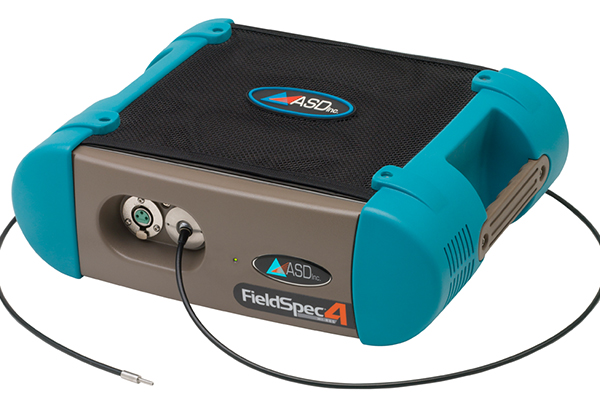Precision Agriculture

What is Precision Agriculture?
Advances in technology have enabled agricultural businesses of all sizes to implement “precision agriculture” practices. By leveraging data collected from soil sensors, weather stations, and yield monitors, farmers can make more informed decisions about when to plant, how much seed to use, what type of fertiliser to apply, and how to best manage irrigation.
The history of precision agriculture began through early GPS-satellite adoption, which allowed farmers to gather data and steer agriculture equipment automatically. This data-driven approach to farming quickly evolved, and today’s precision agriculture technologies are becoming even more sophisticated as businesses look for ways to improve operational efficiency and optimise yield.
Precision Agriculture Gives Farmers More Control Over Their Farms
The advancements in precision agriculture technologies have allowed farmers to collect even more precise data sensors, aerial devices, and stationary IoT solutions. Now farmers can accurately:
- Use historical data, predictive modelling, and environmental insights to pick crops with higher yields.
- Continuously streamed in real-time site performance data
- Achieve long-term economic and environmental practices on the farm.
- Give the appropriate amount of water, nourishment, and pest control, based on digital farming data
- Predict and react to changing weather conditions.
Advantages Of Precision Farming In Agriculture
More Monitoring Data
Growers can continuously monitor a wide range of metrics thanks to precision agriculture technologies. They have the opportunity to keep track of rainfall levels, the sources and types of nutrients their crops need, soil samples, fertiliser inputs and more.
Improved Efficiency
Precision agriculture sensors offer farmers crucial real-time data in the long term by monitoring soil moisture, crop health, and nutrition levels. During both harvest and planting season, a site manager may use knowledge of trends and changes to maximize efficiency and profitability as data provides them with insight into recognising patterns and forecasting changes, potential risks, and yields.
Increased Crop Protection
Overuse of pesticides is one factor responsible for high yield and soil demands. Farmers frequently misuse nitrogen in an attempt to protect their crops from insects. Using chemicals degrades the site’s sustainability, and it’s also expensive. Precision agriculture helps farmers minimise pest control and utilise chemicals only when necessary, while also protecting plants more successfully.
Irrigation Management
Using precision agriculture a farming team has the ability to accurately tell when to irrigate a field using centralised command and control tools. This can predict when the next irrigation event should occur, based on specific conditions like evapotranspiration rates. Farmers can also schedule automated irrigation events that happen without any human intervention.
This level of automation takes a lot of the guesswork and time commitment out of irrigation planning while also ensuring that fields receive the ideal amount of water. In some cases
Ideal Across Various Agricultural Applications and Operations Including:

Crops
With proper analysis, producers are able to accurately measure crop growth, monitor on-farm trials and identify issues such as uneven spreading or inconsistent sprays. On the basis of reliable results, farm management and planning decisions are much easier.

Grains
As the grain production industry increasingly uses precision ag monitoring solutions, it is important to understand the possibilities presented by the latest technology. Farmers can use NIR and hyperspectral solutions to answer key questions about their crop rotation patterns, yield management, storage and irrigation.

Soil
Sustainable farming means starting with the soil as the base of the operation, using analysis to develop a long-term program. Reliable, reproducible analysis of soil texture, soil moisture, salt levels and paddock rotation is achievable through hyperspectral analysis.

Viticulture
Satellite and airborne platforms provide images depicting vineyard conditions, maximising grape yield and quality while managing location-specific risks and variations. This highly-customised application uses the latest leading technology to achieve results and to optimise harvest in this lucrative industry.
How Does Spectroscopy Work?
Many disciplines use spectroscopy as an analytical technique owing to its high accuracy and non-invasiveness.
In spectroscopy, the wavelength of light and other substances is used to assess the absorption, transmission, and emission of electromagnetic radiation. Spectroscopy also incorporates collision energy calculations for electrons, protons, and ions in a molecule as well as those of additional chemicals.
Incorporating Spectroscopy Into Precision Agriculture
Spectroscopy is a non-invasive method of analysing crops and foods. It allows for exact crop/food analysis and quality control. And the use of spectroscopies in small portable gadgets, such as drones and handheld devices, has only expanded their usage.
Conventional crop analysis using traditional methods is time-consuming, complicated, destructive, and requires infrastructure and resources. Spectroscopy measurements in comparison rarely require sample preparation, with data often simpler to interpret.
Ultraviolet-Visible (UV-VIS)
The UV (100 nm to 380 nm) and visible (380 nm to 750 nm) wavelengths that are used in spectroscopy fall in the ultraviolet-visible spectrum, which runs from 100 to 380 nanometers. UV-Vis spectroscopy is mostly used to monitor the quality of edible oils, specifically evaluating fat oxidation and colour.
Fluorescence spectroscopy is a popular way to quantify things. It’s sensitive and precise enough to spot traces of pollutants, toxins, carbohydrates, lipids, proteins, microbes, and fungi. Along with detecting these properties, Fluorescence spectroscopy can also detect liquid chromatography and fluorometry.
Near-Infrared (NIR) Spectroscopy Application In Agriculture
Pest, Disease, and Toxin Detection
The presence of mycotoxins in food is an indication of food spoilage and can pose a serious health risk. NIR can be used to detect fungal contamination and estimate levels of mycotoxins.
Drought Management
Water levels are monitored using NIR spectroscopy to determine if crops are experiencing water stress and to adjust irrigation as needed due to the distinctive spectrum.
Maturity
The percentage of dry matter within crops is a key indicator of maturity, as it affects its degree of ripeness. Green mature fruits should be estimated based on the dry matter to avoid harvesting them prematurely and causing them to spoil. The use of NIR spectroscopy allows for more accurate measurements of dry matter content and thus helps to reduce wastage by ensuring that crops are only harvested when they are ripe.
Fertiliser Application
Leaf spectrometry can be used to track plant development. Scientists and farmers may keep track of crop development and respond by giving the plants the proper nutrients.
Processing
The number of parameters to be monitored in agriculture varies based on the type, size, and expected quality of the final product. The dry matter content, BRIX, and water quantity must all be measured. It’s also possible to use NIR to detect them, identify the finest fresh produce and track production processes.
Post-harvest quality control
Climacteric fruits may be kept for months after the harvest before being sold or transported. Various quality criteria, such as ripeness, internal damage, and external appearance, can be monitored in order to detect spoilt produce and prevent the rest of the product from being affected by ethylene.
Which Precision Agriculture Device Best Suits Your Needs?
Whilst All Our ADS Devices Undertake A Similar Process For Collecting Spectral Measurements, They Serve Their Own Unique Purpose.

LabSpec NIR Spectrometers
Key Applications: Pharmaceutical | Forestry | Raw Material Analysis | Quality Control | Agriculture | Consumer Products


